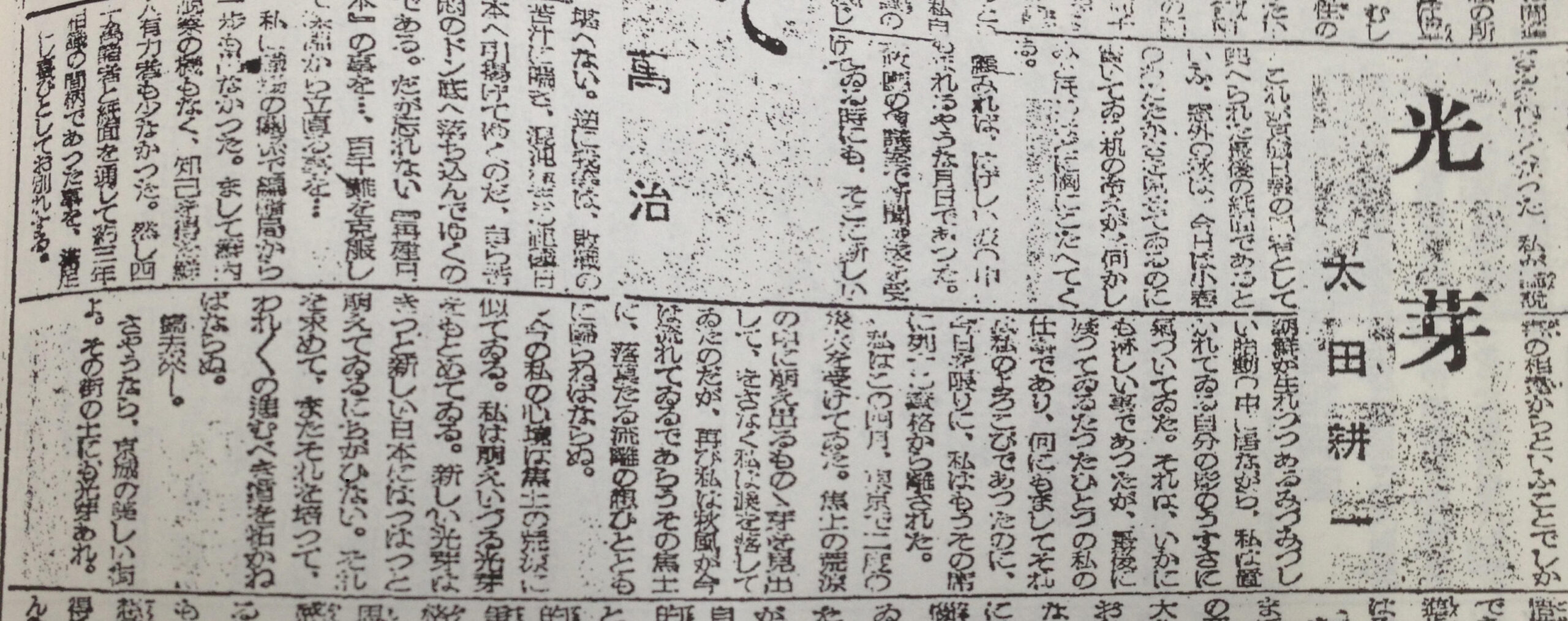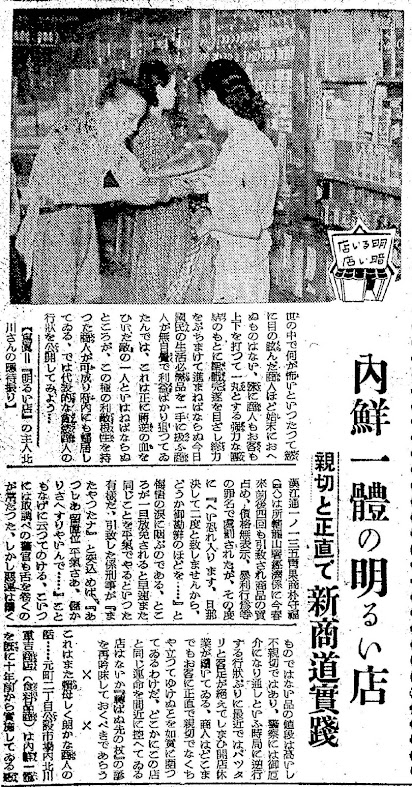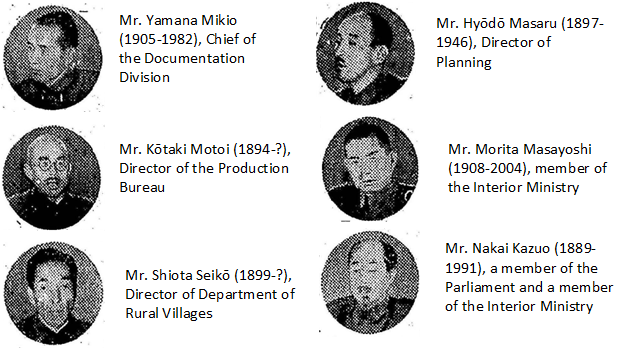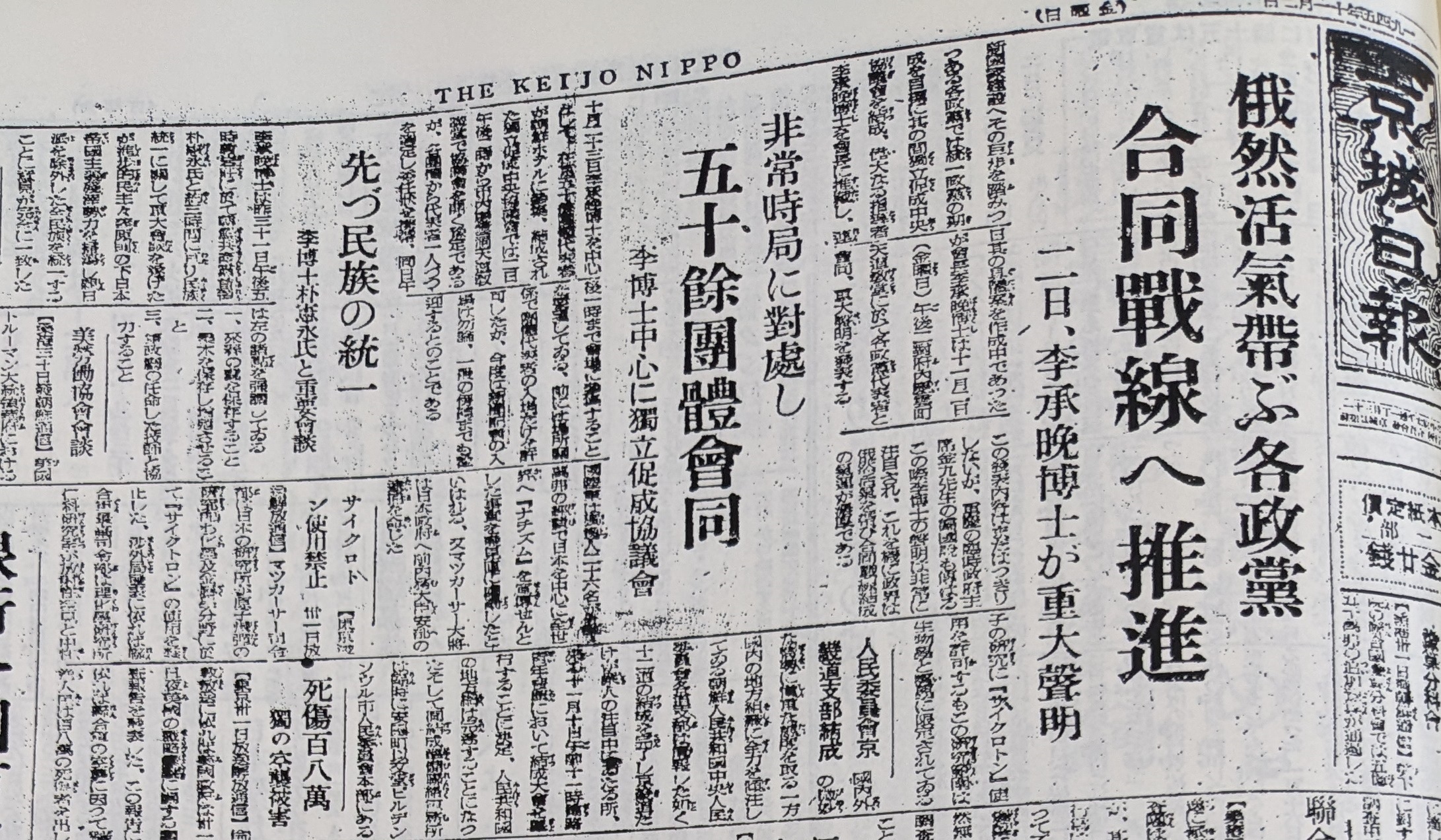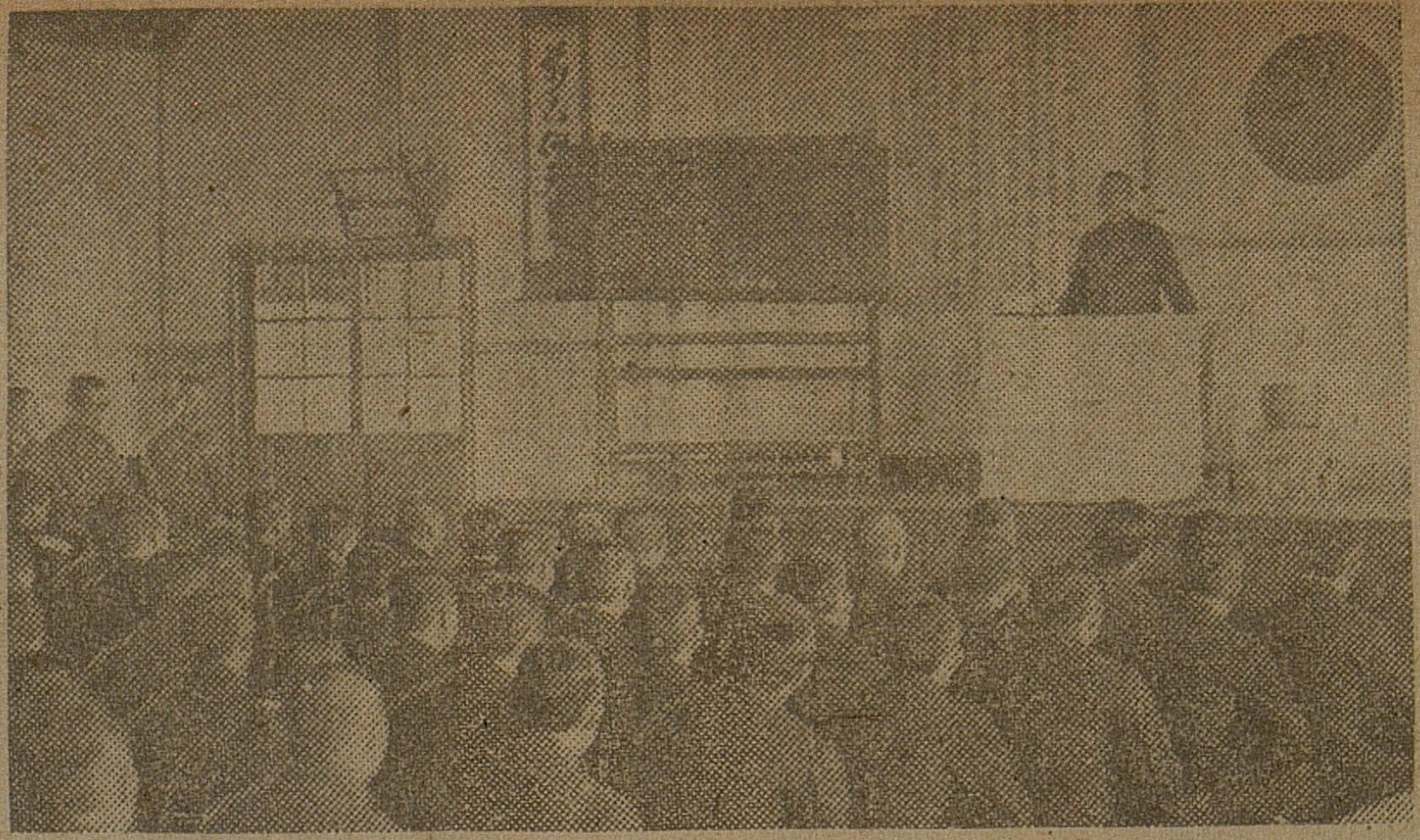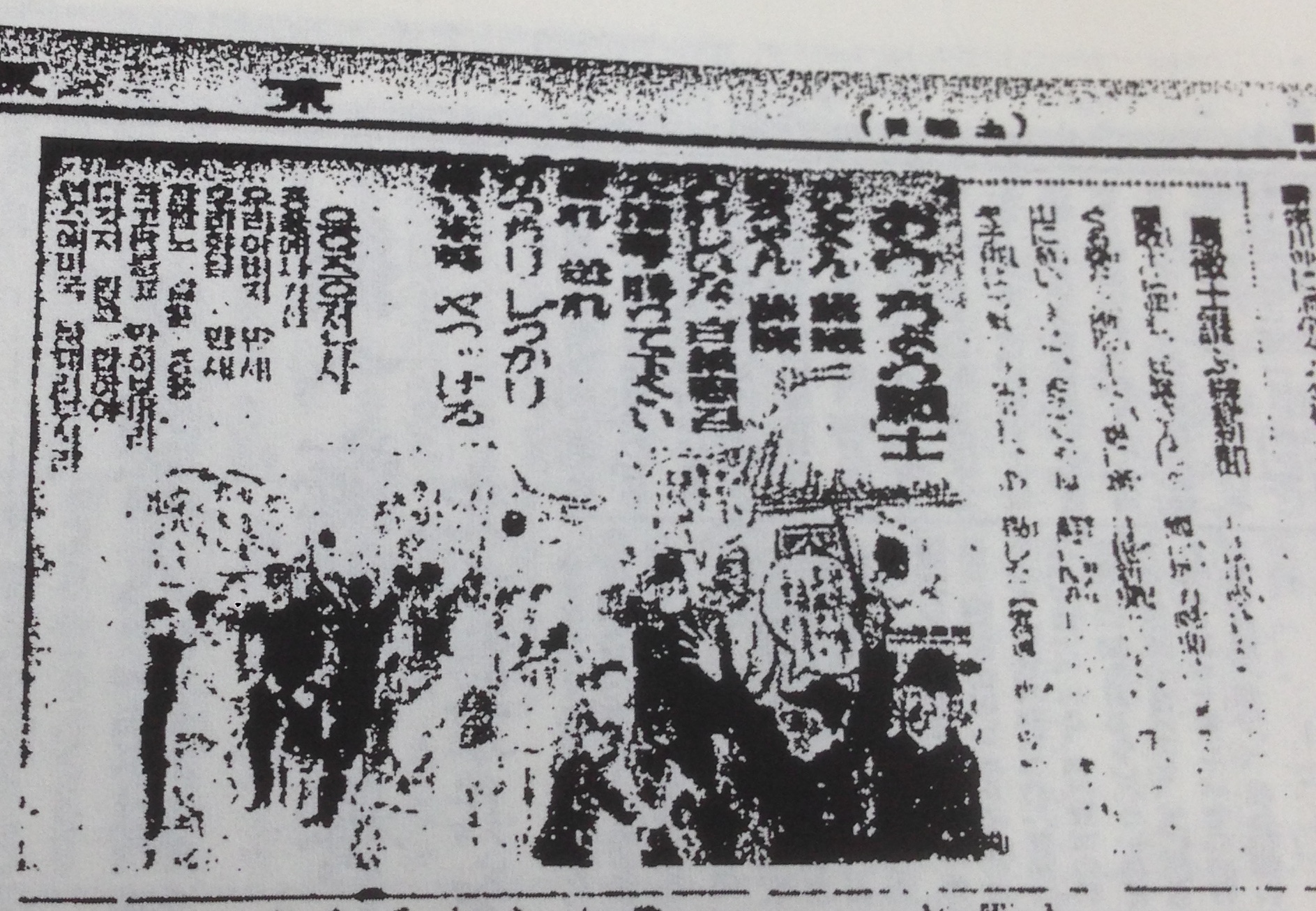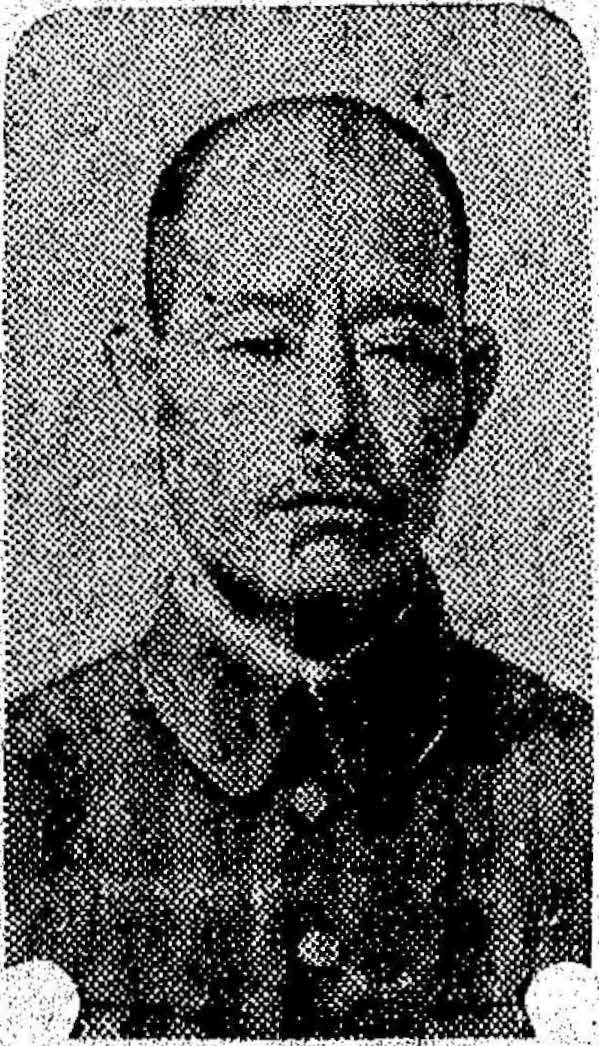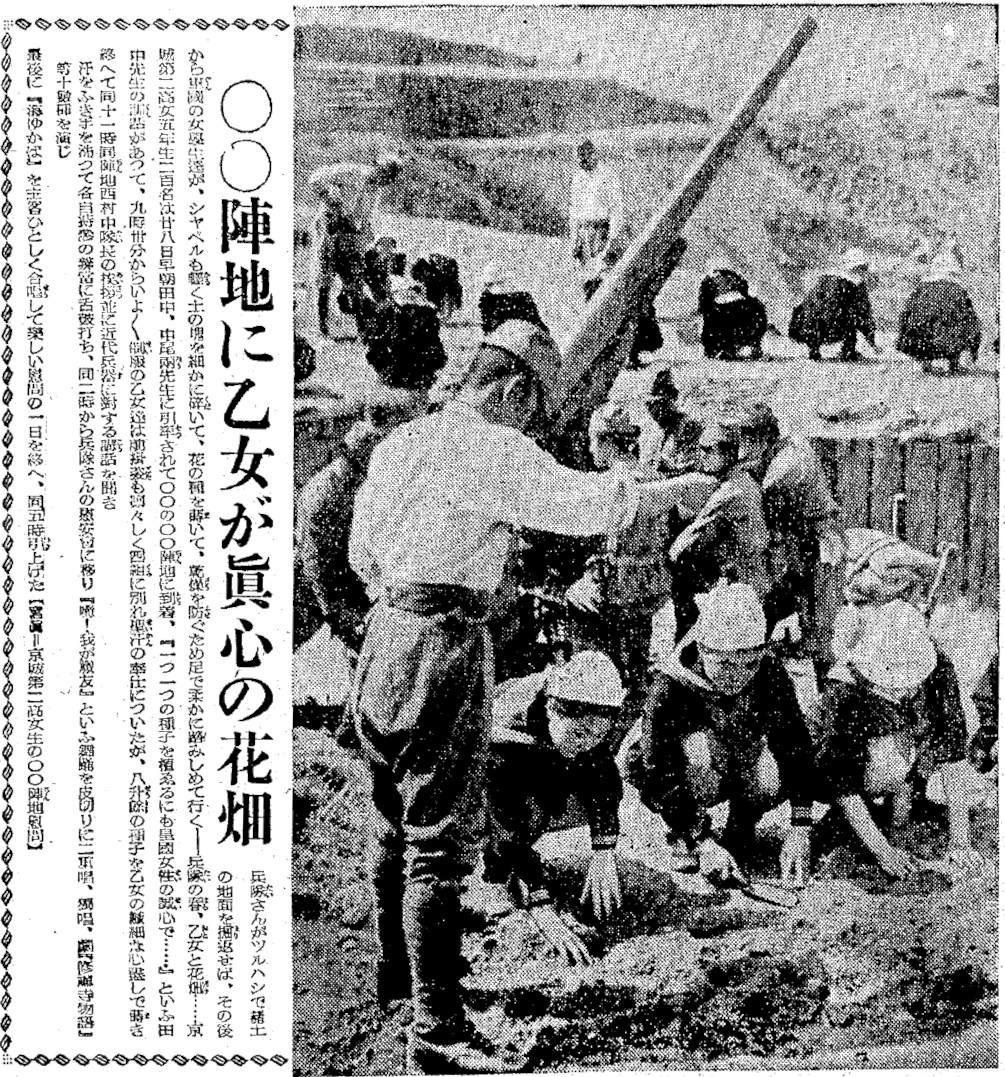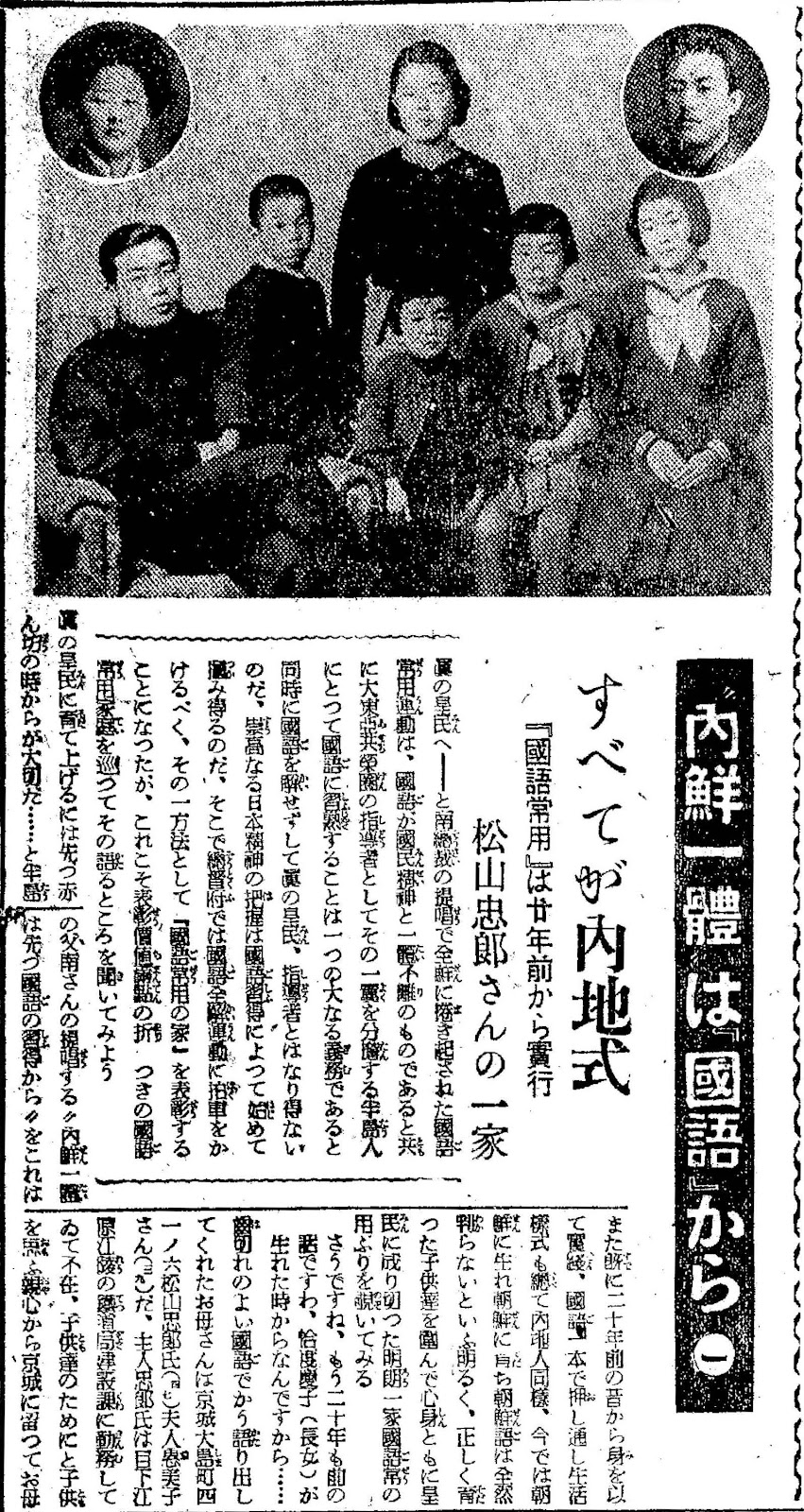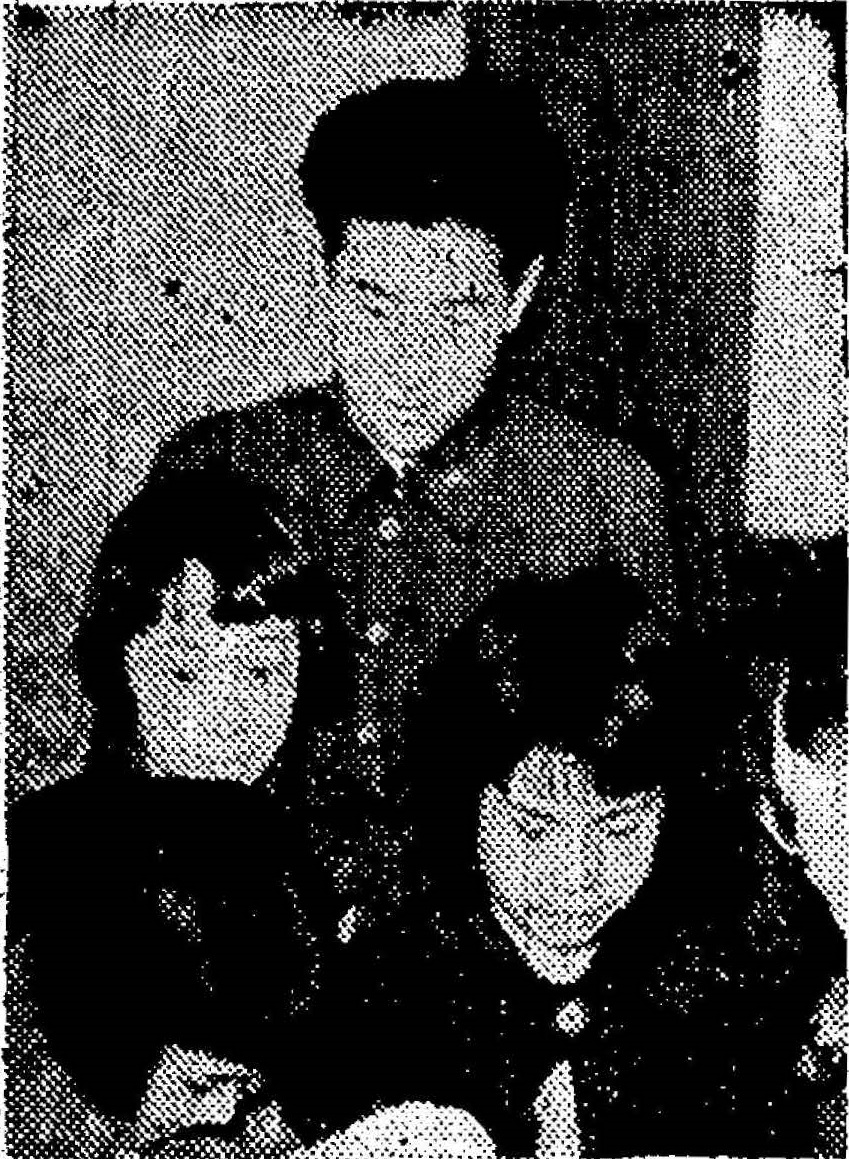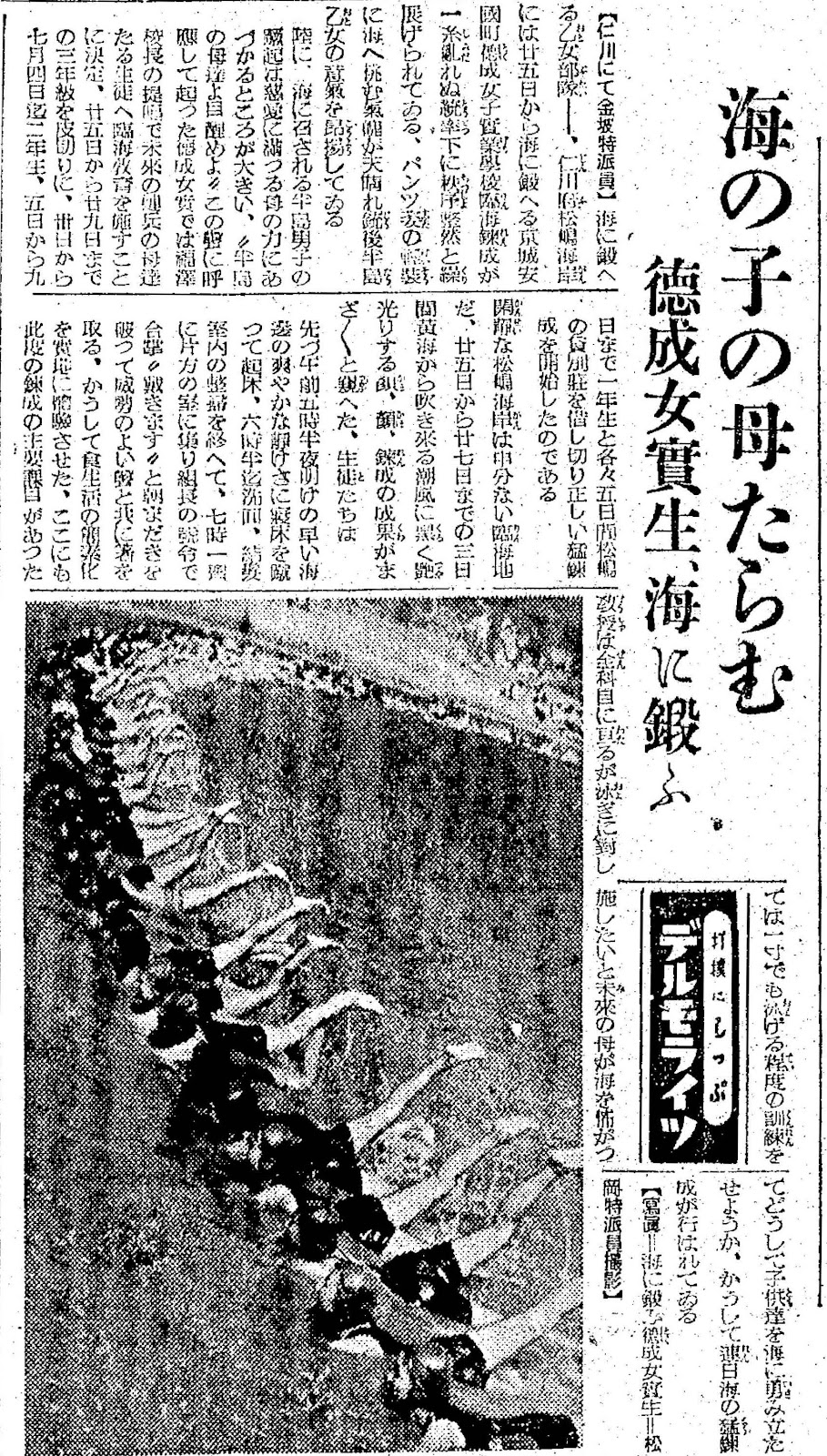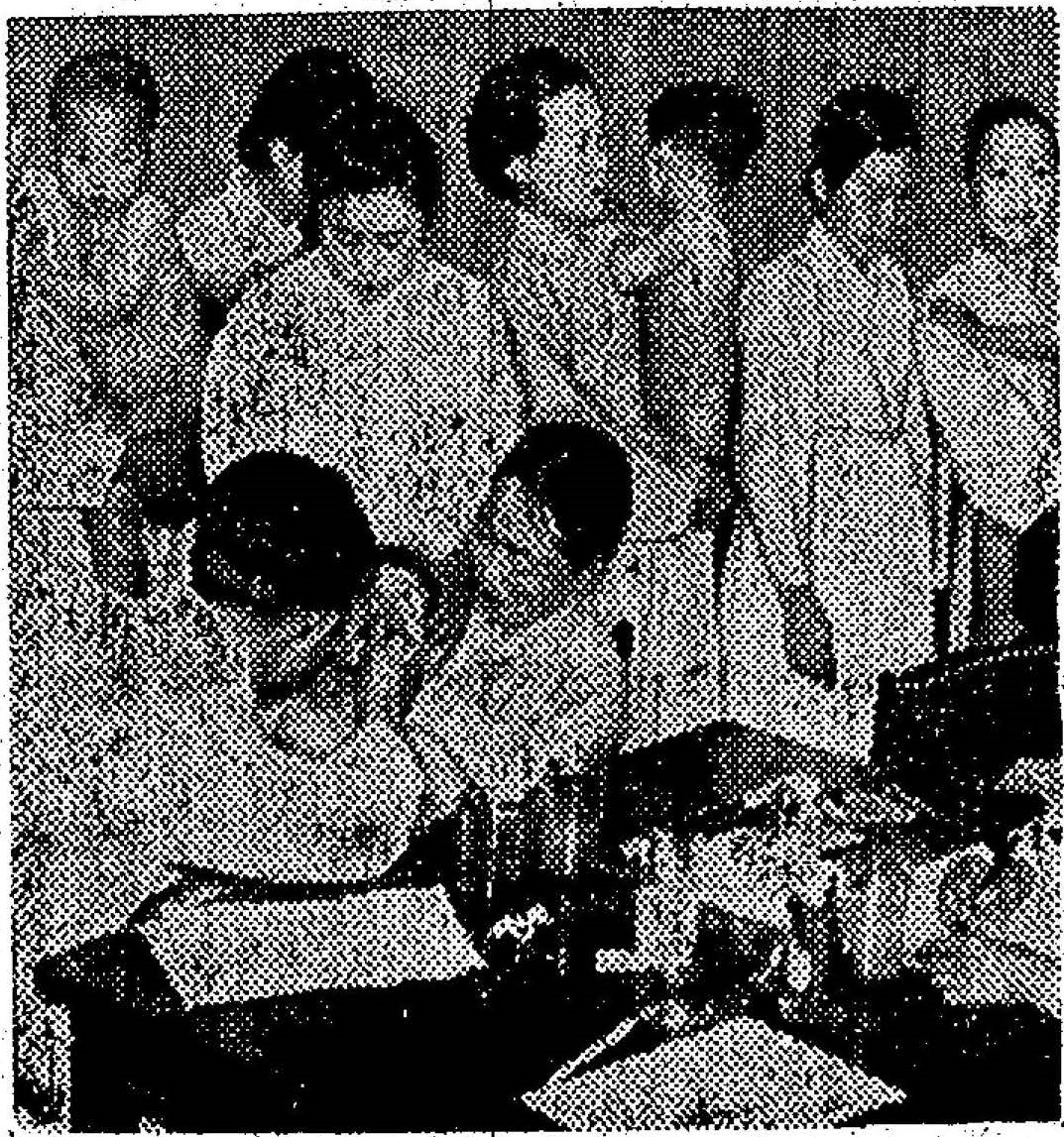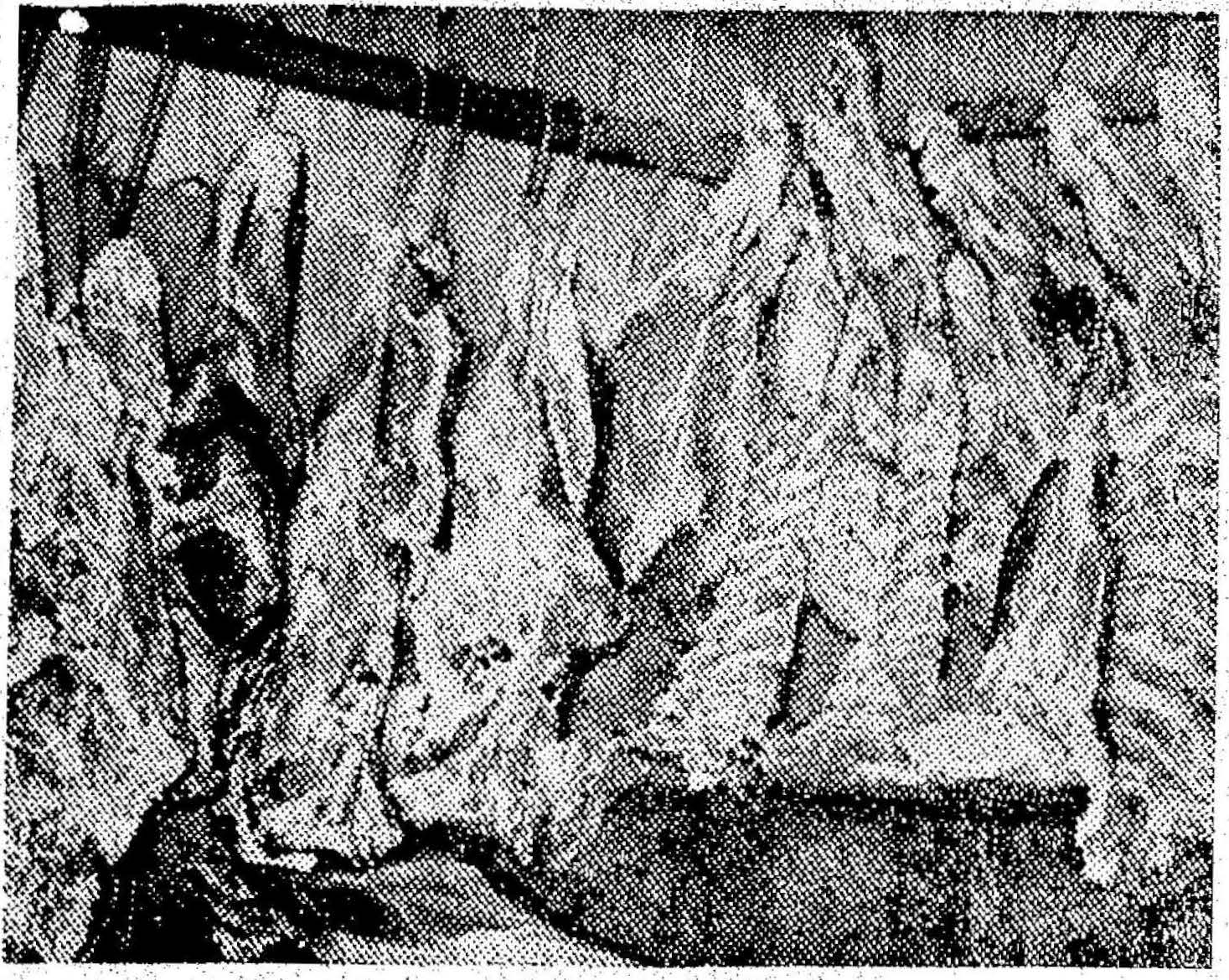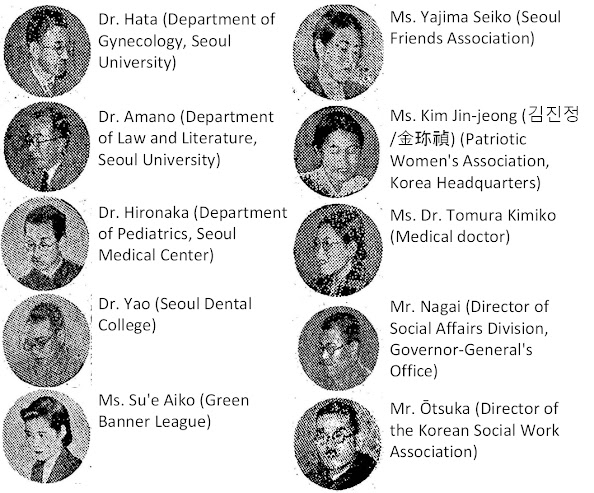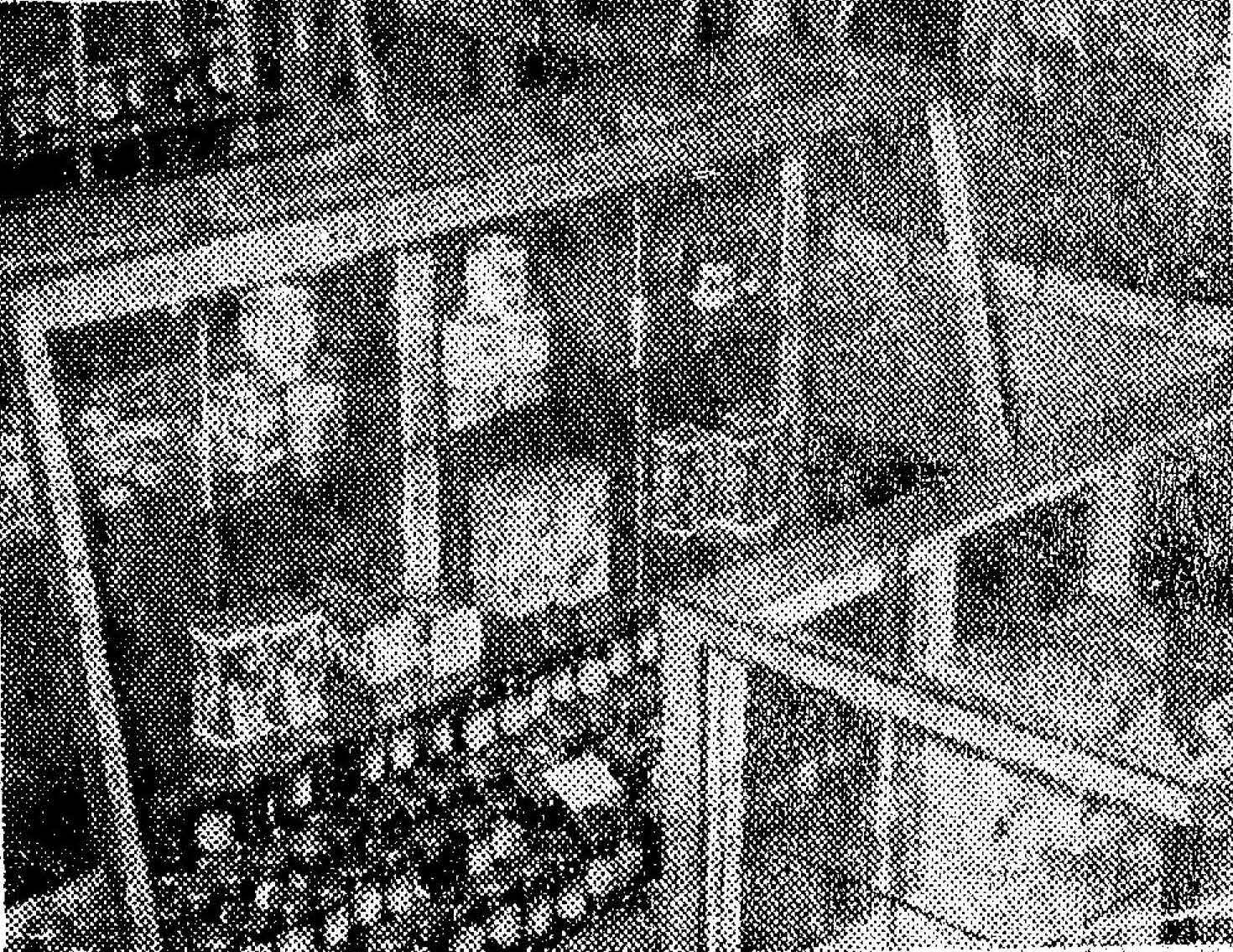
Rationing sugar and sweets in 1943 Seoul: lucky families got coveted ration books issued by snack retailers, while others received nothing, one mother collapsed in line waiting to buy one cookie for her infant, so Patriotic Groups intervened to prioritize rationing to children and the military
2023-04-15
429
1658
This article from 1943 Seoul discusses the rationing of sugar and sweet snacks that was instituted due to the shortage of sugar supplies, which were just 18% of 1938-1939 levels. Families were issued ration books by each sweets retailer and given their allotment of sweets based on the size of each household. Some families gamed the system by receiving ration books from multiple retailers and getting more sweets that way. Others were not so lucky and had to wait in long lines for scarce supplies. There is one anecdote about one mother who collapsed in line waiting to buy one cookie for her infant. Sweet snacks were produced in factories as well as in the retail shops, but much of the supplies were diverted into the black market. The article proposes solutions, including more involvement by the Patriotic Groups and the retailers association to prioritize the distribution of sweet snacks to children and the military.
Patriotic Groups (JP: aikoku-han, KR: aeguk-ban, 愛國班) were neighborhood cells which functioned as the local arm of the Korean Federation of National Power (国民総力朝鮮連盟, 국민총력조선연맹). Every Korean living in Korea belonged to a Patriotic Group. It typically consisted of a few households, led by a Patriotic Group leader, who normally acted as a mini-tyrant micromanaging the lives of everyone within the Patriotic Group. That included things like rationing food and goods, enforcing mandatory State Shinto prayer times and shrine visits, ‘volunteering’ laborers upon the colonial regime’s request, arranging marriages, holding mandatory Japanese language classes, spying on each other, etc.
Gyeongseong Ilbo (Keijo Nippo) December 21, 1943
Tomorrow’s posture to win through to victory
A Focus on Eating Habits (4)
Waiting in line for goods destroys your health!
Don’t double or triple your purchases!
Sugar and Sweet Snacks Edition
Sugar is one of the most popular food essentials that are being rationed at stores. Sugar is currently being sold freely under the autonomous control of each retailer, but each vendor issues a ration book to each household and valued customer, and distributes rations based on the number of family members. There are some regions where families receive regular monthly rations of sugar, while families in other regions cannot get their hands on sugar for close to two or three months at a time. Among them, some families receive ration books from two or three different suppliers and double- or triple-dip into the sugar supply.
Sugar is one of the most important foods in terms of nutritional glucose intake, not to mention seasoning, so in order to correct this harmful market situation, Seoul authorities are strictly enforcing the ban on double and triple rationing of sugar to prevent exploiters from taking advantage of the situation. Authorities are also reducing sugar rations to some households while increasing sugar rations to others by taking into consideration the number of family members and their living conditions. The draft to implement such policies has recently been completed and is being submitted to the Governor-General’s Office, but it is not expected to be realized until the next year. When the sugar rations to some households are reduced to resolve the problems with the distribution of sweet snacks, which is currently the subject of much public criticism, then the concerns of families with children will be assuaged.
For a long time now, there have been calls about the difficulties in obtaining sweet snacks in general. There was a tragic story of a mother with an infant who was forced to stand in line for several hours at a snack store on a frosty morning along Honmachi Avenue to obtain one cookie for her child, only to collapse from anemia. Families with lots of free time and people could run all over town to get a cookie, but this meant that families with young children who wanted to give them snacks but did not have the time to shop around for sweet snacks would never be able to get any. These sweet snacks are left to retailers to sell freely. Because these are things that everyone wants, there are growing rumors that supplies are being diverted and sold on the black market. That is why sweet snacks are actually not being distributed to ordinary households.
When we asked Mr. Saburō Satō, director of the Seoul Confectionery Industry Association, about the state of sweet snack production, we found that the rationed supplies of sugar, the main ingredient of sweet snacks, were 18% of what manufacturers had in 1938 and 1939, when there was an abundant surplus of sweet snacks, but he insisted that supplies of the main ingredient were not that scarce.
There is no large-scale import of sweet snacks from mainland Japan at all. In addition, due to the decrease in the supplies of the ingredients, the decline in the manufacturing of sweet snacks has been larger than the decline in the supplies of sugar, the main ingredient. Each retailer sells to the general public in accordance with the guidelines of proper distribution based on actual consumption as determined by the authorities. However, because freely selling sweet snacks to people lined up at a storefront would cause problems, a registration system has been introduced and tickets have been distributed. One interesting phenomenon is that people who usually drank alcoholic beverages and did not eat sweet snacks have recently begun to eat lots of sweet snacks, which has shifted household demand towards sweet snacks, and increased the number of sugar consumers.
In terms of sweet snack production, the allocated raw materials are properly distributed to each producer, but since most sweet snacks retailers are also engaged in the production of sweet snacks themselves, things would probably run more smoothly if producers and retailers were clearly delineated in the distribution system.
We asked Mr. Kichiheijirō Nagamoto, the founding committee chairman of the Seoul Confectionery Retailers Association who has worked tirelessly to organize the association, about where to set the appropriate standards for the distribution of sweet snacks, and how families with children who are currently not registered with any retailers can buy sweet snacks.
I hear that sweet snacks are hard to come by, but I don’t think there are any households in Seoul that don’t eat sweet snacks at all. Each retailer makes their own sweet snacks in-house, and because there is no clear system set in place by the association, it is not possible to plan production. Individual stores make and sell a variety of sweet snacks from ingredients that they receive, but the registration system seems to be the most popular with the consumers. Although it is not possible to immediately distribute sweet snacks upon receipt of a postcard or verbal request, we try to distribute them in one or two months upon receipt of an order, and tickets are issued to those who visit the store in the morning.
If a strong retailers association could be formed, if we were not dependent only on small individual manufacturers, and if we could also receive wholesale orders from large factories, then it would be much easier for consumers to obtain the products. The retailers association could make an agreement to distribute to consumers in each district, or distribute to schools and labor centers on a priority basis, or survey families with children through the Patriotic Groups and distribute to them on a priority basis. However, if individual suppliers freely connect with consumers, as is the case today, there will be people who double or triple their purchases.
Therefore, it is essential to plan production and ration accurately. For example, it is the mission of confectionery merchants in wartime to stop sticking to traditional ways of doing business, and produce many popular sweet snacks and ration them in various settings. Even when rationing to preferred customers, it would be unbalanced to ration based on past patterns of extravagant consumption.
Even when consumers order supplies through verbal requests or by postcards, they are often coldly turned down, and so they turn to the black market to obtain tickets. How are sweet snack stores in the Seoul area issuing snack tickets?
If they sell snacks in the store, people will line up to buy them, and if they offer tickets at a certain time, people will also line up to buy them. Some stores will give out sweet snacks twice a month if you bring in your rice ration book, while others will sell sweet snacks if you bring in hard currency, and so on, which has led to complaints about snack retailers. Oftentimes, families with free time and people can walk around town and obtain supplies. If you want something, others want it, too, so unless people can show restraint by buying one item instead of two, and buying once instead of twice, there will be no end to the shortages of sweet snacks.
Therefore, it would be more fair to have a registration system for consumers of sweet snacks in all of Seoul, and to link consumers to snack retailers by district. In wartime, sweet snacks are a source of nutrition for infants and a source of comfort for production warriors, so the cooperation of the general public is desired to focus distribution accordingly. We believe things will continue as they are now, unless the authorities take appropriate measures.
To address the complaints in the city about the unavailability of snacks, the authorities are taking active measures to provide sweet snacks to children who really need them, such by as increasing the amount of raw materials and distributing cookies for infants through the Patriotic Groups. Authorities arranged for a large confectionery factory to produce caramel candy, and distributed them through schools specially to children. A deeper understanding about sweet snacks by the general public is desired. [Photo: A snack store displaying food products in bottles instead of sweet snacks]
Source: https://www.archive.org/details/kjnp-1943-12-21
See also the other Keijo Nippo food shortages articles in the same series:
京城日報 1943年12月21日
勝ち抜くあすの構え
食生活を衝く(4)
体を壊す行列買い
二重、三重買いは止めよ
砂糖・菓子
食品生活必需物資の末端配給で一番注目されているのに砂糖がある。砂糖は現在各小売商の自治統制として自由販売ではあるが、各業者とも従来の華客及びその周辺の各家庭に対して通帳を発行し、家族人員を基準として配給を行っているが、地区的に見て毎月順調に配給を受けている家庭と二ヶ月も三ヶ月近くも砂糖の入手出来ない家庭もあり、中には二、三ヶ所の業者から配給通帳を受けて二重、三重に甘い汁を吸っている者もある。
砂糖は調味料としては勿論、糖分摂取の栄養学上から云っても最も重要な食品の一つでもあるので、こうした弊害の多い現在の市販状態を是正する為、府当局では今後の砂糖の配給には二重、三重と搾取者のつけ込む隙の無いよう厳正を期した上、家族人員の外に生活程度を考慮して、不必要な家庭の配給を減じ、他を増加する方針で先頃原案の作製も終り、総督府に提出中で、実現は明年へ打ち越される模様ではあるが、この砂糖の家庭減量配給が完備すればこれを基準にして、現在囂々の非難の的となっておる菓子類の配給についても光明がともされることになれば、子供をもつ家庭の悩みも解消する訳である。
菓子類の一般入手難が叫ばれる声は久しい。幼児を抱えた母親が霜の深い朝、本町筋の或る菓子屋の店頭で吾が児に与える一片のビスケットを得んものと数時間立たされ貧血してたおれたと云う悲劇もあった。暇と人手の多い家庭ならば街中を駆けまわって手に入れることも出来よう、と云うことは間食させたい盛りの幼児を抱えていても、菓子を買い漁る暇の無い家庭にはいつまで経っても手に入らないと云うことである。小売商の自由販売に任せてある菓子である。誰でもほしい物であるが故に横流れ、闇流しの声も拡がりつつあるのだ。事実菓子は一般家庭へ廻らないのだ。
そこでお菓子の製造状態を打診してみると主原料たる砂糖の配給は菓子の余る豊富な時代であった昭和十三、四年の製造業者の実績の一割八分となっており、主原料からみるとそれ程過少ではないかと、京城菓子工業組合理事佐藤三郎氏に訊ねる。
内地製菓の大量輸入が全然ありません。それに材料の減少で主原料の割より製造は少ない訳です。一般市販については当局の消費実績を基調として適正な配給と云う指針に基いて各小売商は各自販売を行っていますが、店頭に列べて自由に売ったのでは行列買の弊を生じるので登録制になり、切符配布の方法を講じていますが、面白い現象は近頃酒を呑む人で従来甘い物を口にしなかった様な人達も非常に食べる様になったことで、家庭での甘い物の要求が菓子の方へ傾いて来たので、需要者が多くなっているとも云えます。
製造方面では割り当てられた原料を適正に各生産者に廻して作らせていますが、菓子は小売商もほとんど自家製造をやっているため、これを生産者、小売者とはっきり分けるようにでもなれば末端配給の方も円滑に行くのではないでしょうか。
では菓子の末端配給の適正なり基準を何処に置くか、また現在何処の小売商とも結びついていなくて子供を抱えた家庭はどうしたら菓子が買えるようになるかということを、菓子小売商組合結成に尽瘁する京城菓子小売商組合創立委員長本吉兵次郎氏に訊く。
菓子が入手出来ないと聴きますが、府内在住の家庭で菓子を全然食べないと云う家は無いでしょう。各小売商がそれぞれ自家製造をし、又組合制度がはっきりしてない為、計画生産と云う事が行えず、個々の店で入荷した材料で様々な菓子を造って売っていますが、消費者との登録制が最も採られているようです。葉書なり口頭なりで申し込まれても直ちにお渡しすると云うことは出来ませんが、一ヶ月なり二ヶ月後には順繰りに配給が出来る様にし、また切符の発行なども大体午前中来店する方達に差し上げる様にしています。
強力な小売商組合が出来て各自の少ない製造のみに頼らず大きな工場の卸も適正に受ける様になれば、もっと円滑に消費者の手に入るのではないでしょうか。組合の申合せで地区的に消費者を分担するとか、又は学校、労務方面に重点配給をする、又は愛国班を通じて子供のある家庭を調査して優先的に配給するとかですが、現在の様に個々の業者が勝手に消費者と結びついているのでは二重、三重買いをする人もあれば、そんな調子ですからどこの店もいっぱいで全然菓子の手に入らない面も生じてくる訳です。
ですから計画生産をして確実な末端配給をする事が緊要です。たとえば製造する品種にしても従来の暖簾などに執着せず、大衆的菓子を多く造って多方面に廻せる様にすることなども決戦下の菓子商の持つ使命だと考えられます。得意配給などにしても過去の贅沢な消費実績を基にして配給する事はやはり偏在になりましょう。
消費者が葉書なり口頭なりで申し込んでも、にべなく断られたり、切符を得んものと相当の闇中飛躍なども行われているが、現在府内の菓子屋さんはどんな方法で菓子券を出してますか?
店頭販売をすれば行列買いになり、一定時間に切符を出せばこれまた行列を作るでしょう。実際菓子を小売商の悩みもここにある訳ですが、ある店ではお米の通帳を持参すれば月二回位づつ配給する、また一方には回収貨幣を持参すれば菓子を売るとか、実に種々な方法を講じてますが、結局暇のある家庭や手の多い所はそれだけ街を歩き廻って入手する度も多いでしょう。自分も欲しければ人も欲しいのだと二つのものなら一つ、二度買うものなら一度に我慢して貰わない限り、菓子不足の声は絶えないことになります。
ですから全府の菓子消費者を登録制にして貰って地区的に消費者を菓子商と結びつければ、やや公平を期することも出来るのではないでしょうか。決戦下の菓子は乳幼児の栄養補給源又は生産戦士の慰安なり重点的配給に一般消費者の協力が望ましいと考えられますが、当局の善処法を待つより外は、現在のところこの儘の状態が続くのではないでしょうか。
菓子が手に入らないという街の声に対して以上のような答えを得たが、当局としては原料を増配して乳幼児用ビスケットを愛国班を通じて配給させるとか、大きな菓子工場にキャラメルを製らせて、これを学校を通じて児童に特配するとか、本当に菓子を与えなければならぬ子供達には温かい措置を講じているが、一般消費者の菓子への深い理解が望まれる。【写真=菓子に代ってビン詰め類食品を陳列する菓子屋さんの店頭】

